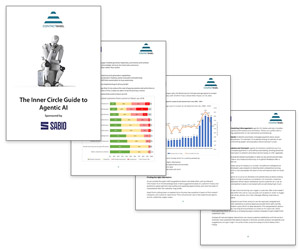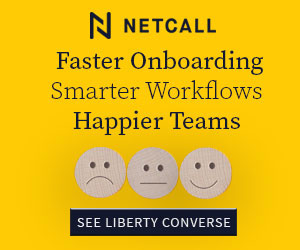Burn-in counteracts burn-out. Its definition focuses on replenishing energy and ‘keeping the fuel for the fire going’, but where do you start with building it into your contact centre culture?
Dr. Phoebe Asquith at Sabio shares advice on how you can improve the wellbeing of your teams by focusing on burn-in – instead of burn-out.
Getting to Grips with Burn-In
Here are four ways to start focusing on burn-in – instead of burn-out:
1. Understand the Difference Between Burn-In and Burn-Out
Burn-in is not a phrase that’s commonly used within the workplace yet, as we’re much more accustomed to hearing about burn-out and its negative consequences.
However, it’s a concept that was developed to counteract the idea of burn-out and promote a positive, proactive attitude towards preventing burn-out.
Here’s a quick overview of the key differences between burn-in and burn-out:
What Is Burn-Out?
Burn-out refers to the process of available resource being outstripped by demand, when you metaphorically ‘run out of fuel for the fire’.
Symptoms of burn-out include running out of energy, experiencing high levels of fatigue, job dissatisfaction, low mood, and feeling hopeless. This typically happens over a prolonged period – the result of a spiral of issues creeping up on people.
If you want to learn more about burn-out, watch this video by Dr Phoebe Asquith to understand the signs an agent is facing burn-out:
Alternatively, you can watch the video and read the transcript, in this article: What Is Call Centre Agent Burnout and What Are the Signs?
What Is Burn-In?
Burn-in counteracts burn-out. It’s focused on replenishing energy and ‘keeping the fuel for the fire going’. It’s about reflecting and understanding what YOU need to boost and maintain your energy levels.
It’s about spotting and preventing difficulties in your environment or emotional response, so you can proactively put measures in place to help avoid a state of burn-out in future.
Note, burn-in can also refer to a sense of lingering loss, where recent and past losses have only been superficially or briefly acknowledged – instead of meaningfully grieved – but this definition will not be explored in this article.
2. Shift Your Focus to Burn-In
Shifting your focus to burn-in is about reflecting inwards, understanding the signs you need to look out for, and the specific needs that are personal to you.
Quite simply, anything and everything that will help prevent you being taken off guard by extreme exhaustion and needing time off work.
Here are some reflective questions to help this process:
- What does your vision of success look like?
- What does self-care mean to you?
- How high are your energy levels?
- How connected do you feel to your workplace and the work that you’re doing?
- How appreciated do you feel at work?
- What are the signs you’re feeling stressed and out of control?
Once you’ve answered these questions, you need to check if your plans and priorities align with these needs and goals, and if not – take proactive steps to address them.
Note, these questions can also be discussed during 1-to-1s or team meetings to help shift everyone towards a state of burn-in – instead of burn-out.
3. Collect Data to Spot Signs of Burn-Out
Data can also help leaders build a better understanding of burn-in and burn-out across their teams.
Therefore, it’s important that organizations should either be having conversations around this or collecting data, because there’s a big role that organizations can play in ensuring that the environment is supportive and helps the employee to replenish.
Not only that, but the more we understand, the sooner we’re able to act. For example, if you can spot where red flags might be arising in your team’s energy levels, you can do something to shift the balance towards burn-in.
However, it’s important to look at the bigger picture for balance. Just because there’s one sign of burn-out, it’s not always indicative of a problem. It might be that your teams are tired, but they feel appreciated, so you’re less likely to see burn-out.
Or if everyone is a bit stressed out and busy, but you’re seeing self-care behaviours within your team, again you’re less likely to see burn-out because people are putting things in place to protect against it.
For some ideas on combating stress, read our article: Employee Wellbeing: How to Reduce Contact Centre Stress
4. Champion the Burn-In Process
Supporting the burn-in process is about helping create the right culture, whereby individuals are exhibiting healthy behaviours, and managers are making sure that pressures are handled in a reasonable way – all to promote and maintain a working environment that can help to sustain and rejuvenate energy.
It’s not just one thing that will contribute to burn-out either, it’s a whole landscape and environment that comes together and creates a cycle of issues.
However, if you start to counter each one of these problematic areas, you can counteract the impact of burn-out and work proactively towards supporting burn-in.
Here are some examples of how you can address things that contribute to burn-out:
Feeling Out of Control
If you feel that you haven’t got much control in your daily life, things are happening to you, and you’re finding it difficult to keep up or regain that control, it can have a real detrimental impact on mental health and contribute to burn-out.
As a manager, you can help counteract these feelings in a team member with burn-in – by exploring if there are areas of their life or their work where they can regain some sense of control. Perhaps by re-prioritizing work together, or looking at how they might better spend their free time.
Within the contact centre, there may also be tools such as workforce management (WFM) features that can help to boost their sense of control – such as shift-bidding or “double take” breaks after a difficult call. Even just being able to speak up about issues can sometimes help with a sense of control.
Unsure About Your Expectations

If you’re unsure about what’s expected of you at work, you’re likely to be more frustrated and lack a sense of achievement.
As a manager, one way to focus on burn-in is to clarify the expectations you have of people in your team. This is a practical approach to counteracting these issues that can lead to burn-out over a prolonged period.
Isn’t it time you started focusing your efforts on burn-in instead of burn-out?
Written by: Dr. Phoebe Asquith, Lead Psychologist for Wellbeing Solutions & Senior Business Consultant at Sabio
To discover more about agent wellbeing, read these articles next:
- How to Avoid Employee Burnout
- A Guide to Improving Mental Health in the Contact Centre
- Top Tips to Spring-Clean Your Team’s Wellbeing
Author: Guest Author
Reviewed by: Megan Jones
Published On: 24th Jul 2023 - Last modified: 23rd Sep 2025
Read more about - Call Centre Management, Dr. Phoebe Asquith, Editor's Picks, Employee Engagement, Health Wellbeing and Stress, Leadership, Management Strategies, Sabio








































